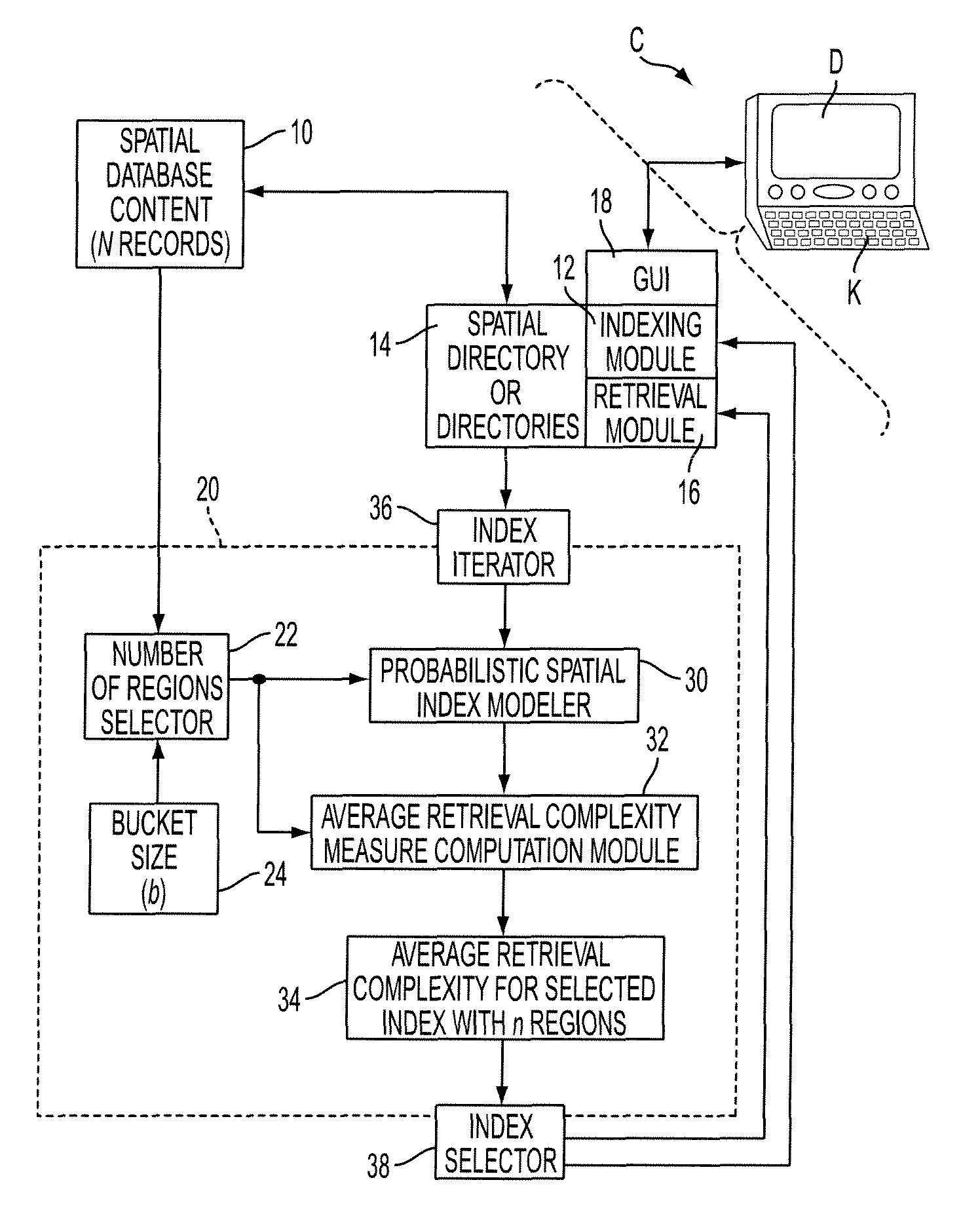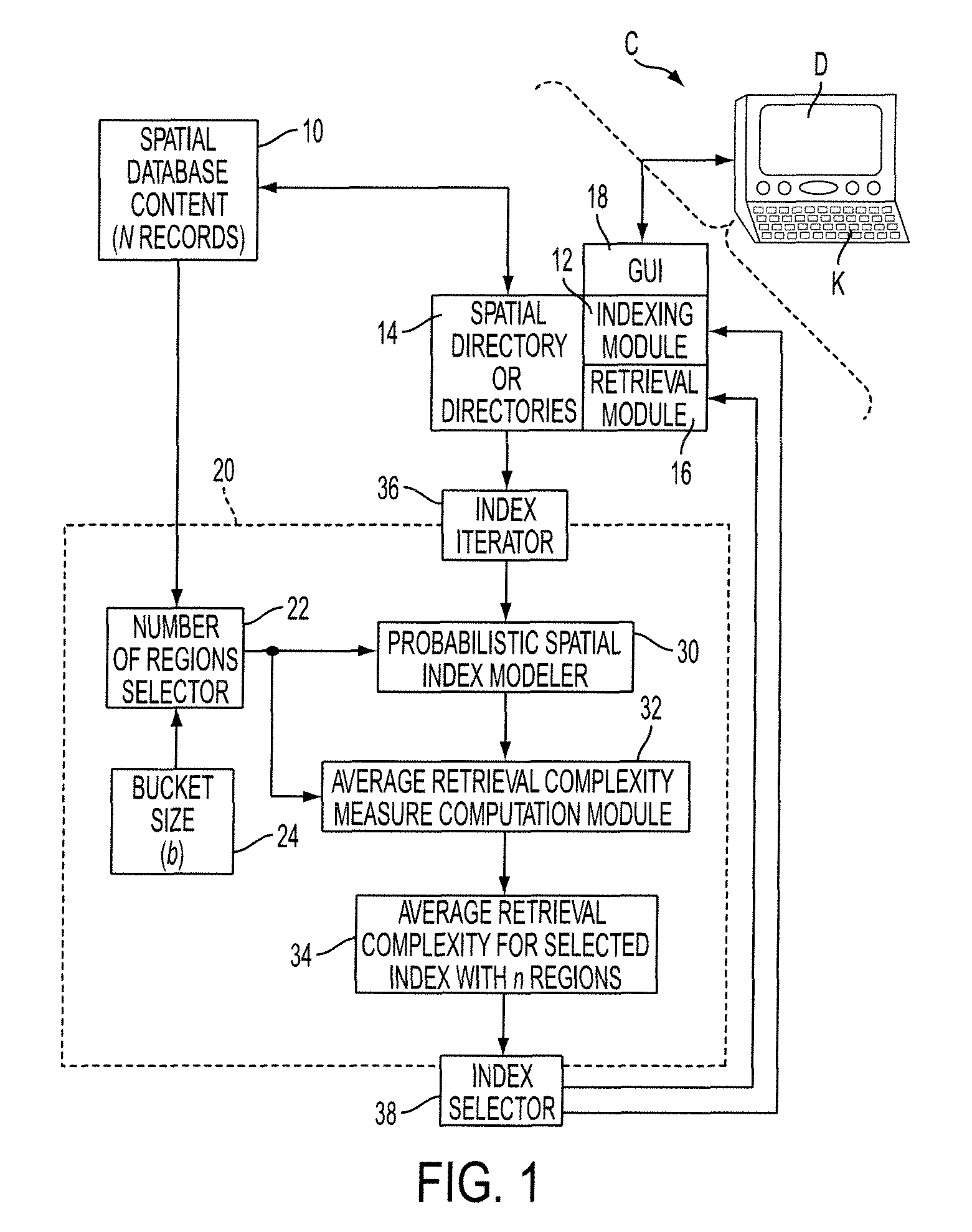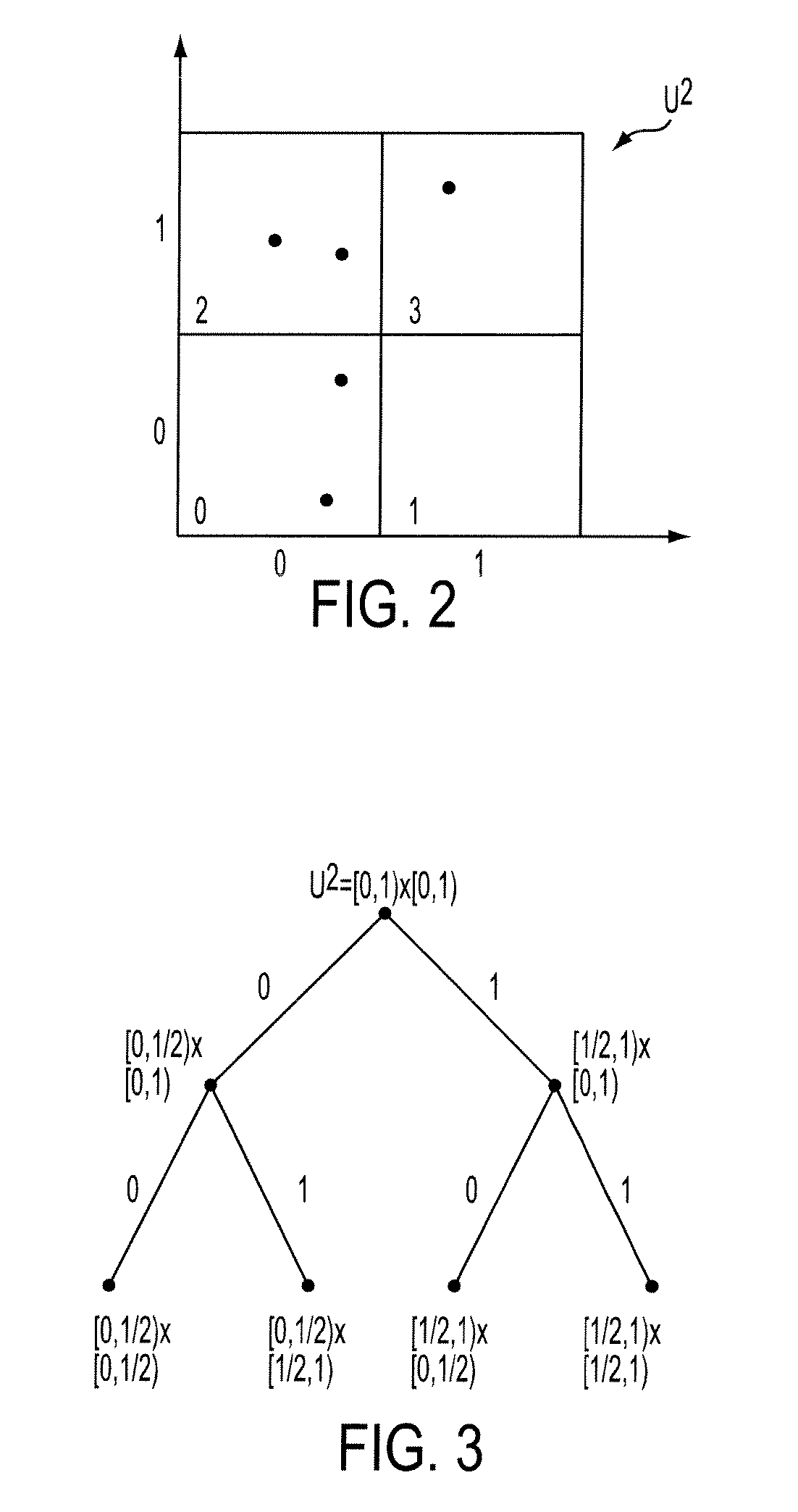Average case analysis for efficient spatial data structures
a spatial data structure and average case analysis technology, applied in the field of information storage and retrieval arts, information processing arts, spatial mapping arts, can solve the problems of high computational complexity of a given retrieval operation, content retrieval is highly computationally intensive for a large spatial database, and indexing is also computationally complex
- Summary
- Abstract
- Description
- Claims
- Application Information
AI Technical Summary
Benefits of technology
Problems solved by technology
Method used
Image
Examples
Embodiment Construction
[0024]The following terms are used herein. As used herein, the term “multidimensional space” indicates a space having at least two dimensions. For example, the term “multidimensional space” encompasses two-dimensional spaces, three-dimensional spaces, four-dimensional spaces, five-dimensional spaces, and so forth. Such a space may be normalized along each dimension, in which case it is denoted herein as Ud=[0,1)d where d denotes the number of dimensions. The term “record” denotes content, such as a point, a location, a file, a description, an image, a location name, or any other content localized within the multidimensional space. The record includes both the content and its localization information. An illustrative record is sometimes denoted herein by the symbol v.
[0025]With reference to FIG. 1, an illustrative spatial information system organizes spatial database content 10, which includes N records. An indexing module 12 is configured to construct at least one spatial directory ...
PUM
 Login to View More
Login to View More Abstract
Description
Claims
Application Information
 Login to View More
Login to View More - R&D
- Intellectual Property
- Life Sciences
- Materials
- Tech Scout
- Unparalleled Data Quality
- Higher Quality Content
- 60% Fewer Hallucinations
Browse by: Latest US Patents, China's latest patents, Technical Efficacy Thesaurus, Application Domain, Technology Topic, Popular Technical Reports.
© 2025 PatSnap. All rights reserved.Legal|Privacy policy|Modern Slavery Act Transparency Statement|Sitemap|About US| Contact US: help@patsnap.com



